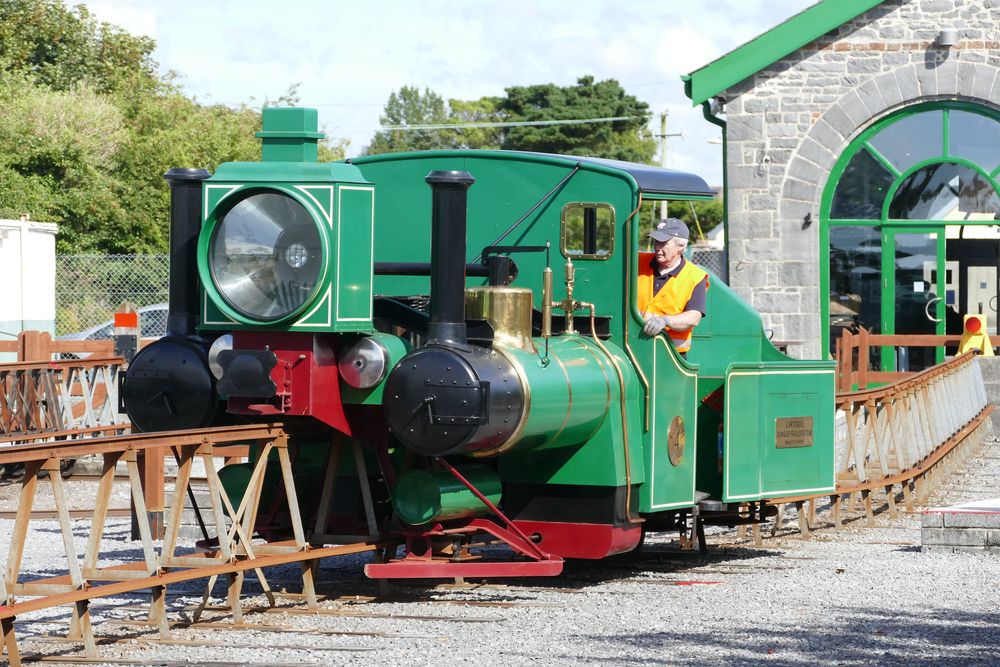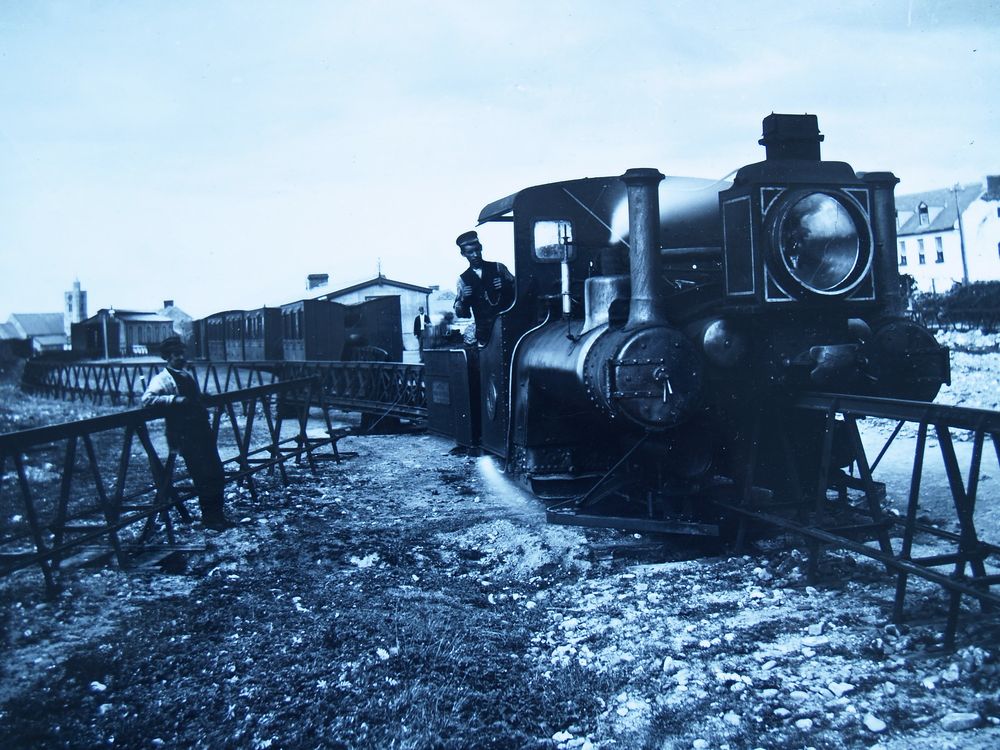A small heritage market town called Listowel in County Kerry, Ireland, is home to one of the strangest monorail system ever built. Instead of lying flat on the ground, the single rail sits above the ground on a trestle held by supports on either side, each making an “A” shape. Specially-built carriages would sit astride the trestles like panniers on a camel’s back.
Indeed, it was camels that inspired French engineer Charles Lartigue to come up with this system. While in Algeria, Lartigue had seen camels carrying heavy loads balanced in panniers high on their backs and this inspired him to design a new type of railway. In Lartigue’s system, the single rail was raised to about waist-height by triangular supports whose base was about four feet wide. A pair of additional rails on either side of the main rail were provided for guidewheels of the locomotives and rolling stock to help stabilize the train while in motion.

A replica of the Lartigue Monorail that ran between Ballybunion and Listowel for 36 years. Photo: Steve Edge/Flickr
The biggest advantage of the Lartigue Monorail, especially on the sandy deserts of Alegria where he built a 90 km track, was that it kept the sands away. The monorail he built in the Sahara used mules instead of locomotives to pull the wagons and was used to transport esparto grass across the desert.
Back in London, Lartigue presented his invention in an exhibition, and it attracted the interest of several European railway companies. But only two Lartigues were ever built—one in France, but it was never used, and the other linked the two rural towns of Listowel and Ballybunion, in County Kerry in the South West of Ireland. When it opened on February 29th, 1888, it was the world's first passenger-carrying monorail.
The Lartigue Monorail was cheap to construct but extremely tricky to operate. For one, everything had to be balanced. The locomotive had two boilers and two fireboxes, placed on either side of the rail. Even the driver and the fireman sat on opposite sides. Every load, including passengers, had to be carefully balanced which was a time-consuming process. If a farmer wanted to send a cow to market, he would have to send two to balance the train. To make matter worse, the Lartigue had a reputation for rolling sickeningly as it moved. It was also renowned for being noisy, unpunctual and slow, taking 40 minutes to travel the 15 kilometers between Ballybunion and Listowel.

Photo: Wikimedia Commons
Another problem with using the Lartigue system was that it was not possible to build conventional level crossings. Instead, double-sided drawbridges were constructed to go over the tracks, which required an attendant to operate. Some level crossings had rotatable tracks, like in a turntable, which could be swiveled to one side allowing a cart to cross. Both the swiveling and drawbridge type crossings were automatically linked to signals, which stopped any approaching trains. Unlike, conventional railways, road traffic was always given priority under this system.
Also could not be used were conventional railway points, so a similar function was fulfilled by a large number of curved movable pieces of track which, when rotated one way, would connect the main and one other track.

Photo: Wikimedia Commons
Despite its many drawbacks, the Lartigue Railway carried freight, cattle and passengers, and brought tourists to the seaside resort of Ballybunion and carted sand from the beaches for 36 years, until it was damaged during the Irish Civil War of 1922/23.
The monorail that exist in Listowel today is a recreation built in 2003. The line is 1 kilometer long and is worked by a diesel locomotive built to resemble the original 0-3-0 steam engines. The recreation also includes three platforms, two turntables, three switches or points, an engine shed, and a temporary mobile ticket office.
References:
# www.lartiguemonorail.com
# Listowel's Lartigue Monorail, The Monorail Society
# Wikipedia



Comments
Post a Comment